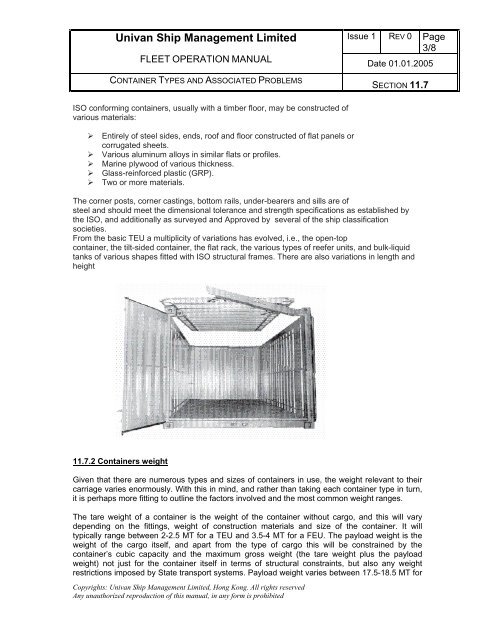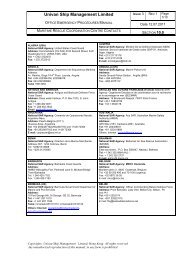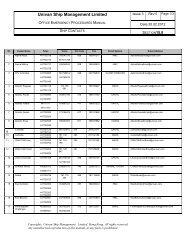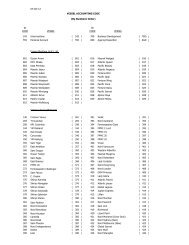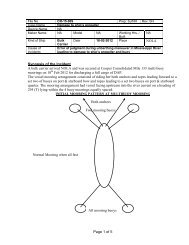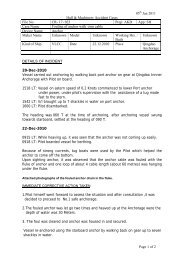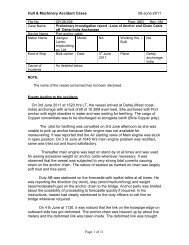Section: 11 CARGO OPERATIONS - Univan
Section: 11 CARGO OPERATIONS - Univan
Section: 11 CARGO OPERATIONS - Univan
You also want an ePaper? Increase the reach of your titles
YUMPU automatically turns print PDFs into web optimized ePapers that Google loves.
<strong>Univan</strong> Ship Management Limited Issue 1 REV 0 Page<br />
3/8<br />
FLEET OPERATION MANUAL Date 01.01.2005<br />
CONTAINER TYPES AND ASSOCIATED PROBLEMS<br />
ISO conforming containers, usually with a timber floor, may be constructed of<br />
various materials:<br />
Entirely of steel sides, ends, roof and floor constructed of flat panels or<br />
corrugated sheets.<br />
Various aluminum alloys in similar flats or profiles.<br />
Marine plywood of various thickness.<br />
Glass-reinforced plastic (GRP).<br />
Two or more materials.<br />
Copyrights: <strong>Univan</strong> Ship Management Limited, Hong Kong. All rights reserved<br />
Any unauthorized reproduction of this manual, in any form is prohibited<br />
SECTION <strong>11</strong>.7<br />
The corner posts, corner castings, bottom rails, under-bearers and sills are of<br />
steel and should meet the dimensional tolerance and strength specifications as established by<br />
the ISO, and additionally as surveyed and Approved by several of the ship classification<br />
societies.<br />
From the basic TEU a multiplicity of variations has evolved, i.e., the open-top<br />
container, the tilt-sided container, the flat rack, the various types of reefer units, and bulk-liquid<br />
tanks of various shapes fitted with ISO structural frames. There are also variations in length and<br />
height<br />
<strong>11</strong>.7.2 Containers weight<br />
Given that there are numerous types and sizes of containers in use, the weight relevant to their<br />
carriage varies enormously. With this in mind, and rather than taking each container type in turn,<br />
it is perhaps more fitting to outline the factors involved and the most common weight ranges.<br />
The tare weight of a container is the weight of the container without cargo, and this will vary<br />
depending on the fittings, weight of construction materials and size of the container. It will<br />
typically range between 2-2.5 MT for a TEU and 3.5-4 MT for a FEU. The payload weight is the<br />
weight of the cargo itself, and apart from the type of cargo this will be constrained by the<br />
container’s cubic capacity and the maximum gross weight (the tare weight plus the payload<br />
weight) not just for the container itself in terms of structural constraints, but also any weight<br />
restrictions imposed by State transport systems. Payload weight varies between 17.5-18.5 MT for


